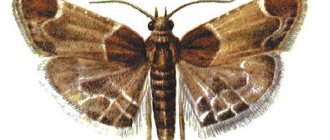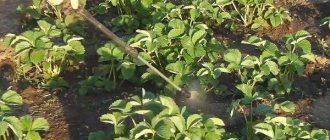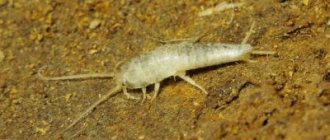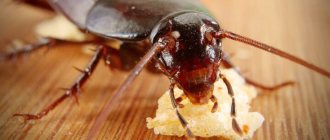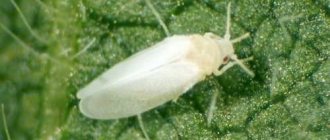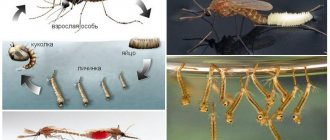Wasps and hornets - studying the enemy
Insects from the order Stalk-bellied, in a huge variety of species, have settled throughout the world. All families of wasps can be divided into two large categories - solitary and social. Regardless of status, they have a similar body structure. Insects have a small head, a convex chest and an elongated abdomen. The junction of the upper and lower body resembles a thin stalk. This structure is not accidental; it gives the predator ample opportunities to attack with its sting. Insects have two pairs of membranous wings.
Attention. In addition to the poisonous sting, predators have powerful jaws. They are capable of tearing apart prey and chewing on someone else's chitinous cover.
Most wasps have a warning black and yellow coloration. It signals the danger of insects. Hornets are representatives of highly organized social wasps. Their size instills a sense of fear in people; the uteri of some species reach 50-70 mm. All wasps are predators by nature. They use their prey to feed the larvae and the queen. Any small insects become food: flies, bedbugs, caterpillars, beetles. If a family of striped hunters settles near bee hives, then conflict is inevitable. Predators love honey very much, so they steal it at any opportunity. Bees selflessly protect their home and food. In battles, losses on both sides are inevitable. Beekeepers have to think about how to protect bees from wasps.
Attention. A group of 20-30 large hornets is capable of destroying a weak family of 30 thousand individuals in a few hours. They do not use a stinger when attacking. With strong jaws, the giants bite the joints of the bees' head and chest.
Why are wasps harmful?
Having your own apiary means not only honey and bee products, but also constant work from early spring to late autumn. Keeping insects requires protection from pests: ants, wax moths, mice, birds. A bear in an apiary also poses a danger. The furry animal can not only feast on honey, but also destroy nests.
Wasps also cause significant damage. If you do not remove pests in early spring, you may encounter their invasion in summer and autumn.
All wasps are predators by nature, catching their prey and feeding their offspring and mother. If insects have settled next to the apiary, then a fight is inevitable. Predators love honey, so they often steal.
Bees protect their family and product, but losses in a battle with the enemy can be significant. They form a ball around the enemy and begin to flap their wings. As a result, the temperature inside the ball reaches +50 degrees, this kills the stranger.
Who are hornets
Predators are divided into two types: solitary and social. Regardless of the group, insects have the same structure: a small head, an oblong abdomen, a convex chest, and two pairs of membranous wings. The junction of the lower and upper body is thin.
The size of the hornets is awe-inspiring, varying from 1.8-3.5 cm, the mother reaches 5-7 cm. The body color is brown with a dark yellow pattern, the abdomen is black. Domestic individuals attack far from the hives, while tropical ones arrive in groups and destroy the family in 3 hours. In this case, 30-40 thousand bees die.
Hornets build nests in tree hollows and form a whole colony. For honeycombs, a mass resembling paper is prepared.
It is advisable to start fighting hornets in early May, when the population is small.
You need to know the enemy by sight: the common hornet
Who are philanthropists
Philanthus is a bee wolf that catches and eats bees. The body color is bright yellow, the head has a golden-yellow crown, length 16-17 mm. Males are smaller than females and feed on plant matter.
Only females hunt, paralyzing prey in flight. To feed one larva, the wasp kills 4-6 bees. First, it removes nectar, which serves as poison for the offspring, then carries it to the nest.
Philanthus makes burrows in the ground that resemble an anthill. You need to look for housing under your feet.
Philanthus or bee wolf - the most dangerous wasp for bees
How dangerous are wasps for an apiary?
Wasps are predators by nature. Once in the apiary, they find a stable source of food for themselves and their larvae. The danger of these insects is that they:
- attack bees and exterminate them en masse;
- they empty the honeycombs, which leads to the death of bee families from starvation;
- they steal bees to feed them to their larvae;
- they climb into the honey extractor and drown in it;
- are carriers of dangerous diseases;
- attack people working in the apiary.
Wasps are divided into several varieties, each of which is dangerous to bees to varying degrees. The most aggressive types of these insects:
- Hornets are highly organized social wasps of large size that live in earthen burrows, tree hollows and other places protected from rain and sun. The size of the hornet's uterus can reach 5-7 cm. When these striped hunters settle near an apiary, problems cannot be avoided. Our species of hornets rarely attack hives, but attack and eat bees on neutral territory. But giant wasps of tropical origin fly to the apiary in large groups and in a matter of hours destroy entire bee families.
- Philanthus (bee wolf) is a not very large solitary wasp that lives in earthen burrows. Only the females of these wasps hunt insects for the purpose of feeding their larvae. It takes 4 to 6 bees to feed one larva. It turns out that during one season, a female bee wolf kills dozens of bees.
- The paper wasp is the most common type of these insects. They are called paper houses because the houses they build appear to be made of paper. These insects mainly attack only weakened bees, and even then relatively infrequently. Their target is not bees at all, but honeycombs. Paper wasps love honey and, during raids on hives, steal large quantities.
Video: How to properly deal with wasps in an apiary
More than once I came across situations when, not far from the point, I noticed wasps flying out of the underground shelters of “thieves of state property.” To be honest, for the first time I was stunned upon closer acquaintance. Believing that there were several creatures there, at most a dozen, I decided to accustom them to substance abuse. I took a can of Dichlorvos and at the same time grabbed an empty can of oil paint.
He carried out the execution in the evening twilight, judging sensibly that at this time the “sworn friends” would gather for the night. There was no limit to surprise when I let in a long stream of aerosol, then prudently covered the round hole with a can, pressing it down with my foot to be sure. There was a powerful roar, more like the distant sounds of a jet plane taking off in afterburner. I don’t know the exact number of inhabitants, but I have no doubt that a substantial colony lived there. Subsequently, he used such destruction more than once. This method of struggle worked flawlessly.
With increased attention from distant relatives to the hive inhabitants, sometimes it is enough to shorten the entrances, install standard barriers, attach additional verandas or cone stops.
Philant - a wolf in the apiary
One of the varieties of solitary wasps specializes in catching and eating honey insects. This is a philant or bee wolf. Females do the hunting. They smell the prey and attack it in flight. Paralyzed prey cannot fight back. To feed one larva, the philanthus kills 4-6 bees. Before being transferred to the nest, the female squeezes nectar from the prey. For her offspring it is poison. Insects settle in the ground, so you need to look for their home under your feet.
Advice. It is better to install the hives away from sandy areas where female philanthus make their burrows. If the apiary has sandy soil, it should be dug up for the winter. Insects hiding for the winter will die from the cold.
How to find a wasp's nest
To exterminate wasps attacking an apiary, you must first find the place where they have settled. This is not always easy to do, since these insects like to make their homes in places that are difficult for humans to reach: in attics, under roofs, on branches and in tree hollows, etc. But if you try, it is quite possible to find the location of the wasp’s house.
Beehive on the territory of the land plot
Even if the area is small, the search can take a long time. You will have to search all the buildings on it (toilet, barn), hedges, trees that have hollows. It should be taken into account that some types of wasps live in earthen burrows. The nest may also be found in a pile of old and unwanted items piled up on the ground.
Destruction of a wasp's nest
There are several methods. In most cases, water, fire, and smoke are used.
- If there is no desire to kill wasps, which also benefit nature, douse the nest with a strong-smelling substance - gasoline, kerosene, machine oil, but leave the entrance and exit open. In a few hours the family will begin to migrate.
- Smoke has a deterrent effect. A fire is laid out near the nest or rubber is set on fire. It is recommended to repeat the next day. The empty nest is dug up, removed, and destroyed.
- A barbaric but decisive method is setting fire to nests. Suitable if the wasp hive is located in the ground. They pour in a flammable substance and throw a match. In a minute there will be nothing left.
- Water. The nest in the ground is filled with a bucket of boiled water with added soap. If the hole is large, repeat. When placing a wasp house on a tree, under a roof, or in any other place on a hill, the cocoon is dipped in a bucket of water. Gently immerse in water and leave for 20 minutes. They remove the cocoon.
If a wasp family has settled in the cracks of a house, garage, or hard-to-reach places, fill it with polyurethane foam. The product instantly stops the flow of air, all residents die. In the same way, you can quickly clog the entrance to a nest, which is located anywhere.
There is no point in waging a fierce fight against wasps in the area, destroying nests, exterminating the family, if these are not hornets. Insects on the site destroy a huge number of garden and garden pests and help people preserve the harvest. Along with bees, they are the main pollinators of plants, bringing significant benefits to people.
Safety precautions when destroying wasp nests
Wasps, as a rule, fight for their house to the last, and the whole flock attacks the one who dares to disturb their peace. Therefore, before you start fighting them, you need to protect your body and face with appropriate equipment. You can use a special beekeeper suit - it will reliably protect against stings. But if it is not there, a suitable alternative would be:
- high boots made of rubber;
- cotton pants and a thick jacket;
- gloves made of rough fabric;
- wide-brimmed hat;
- a net worn over the head over a hat.
Care must be taken to ensure that all parts of the body are completely covered with clothing. If wasps manage to get to, for example, an unprotected neck, ankles or arms, the consequences can be dire!
Preparatory work before cleaning
In order to avoid critical situations, before getting rid of a wasp’s nest, you need to show foresight and do something in advance:
- choose the right time for stripping (it is better to do this at night or before dawn, when the insects are hibernating);
- prepare all the necessary means and tools to destroy the nest, so as not to waste time searching for them later;
- think about escape routes in case a whole flock of wasps attacks (you can, for example, quickly run to the car, jump in and slam the door);
- discuss with household members where they will hide at a time when angry insects fly around the area and look for someone to attack;
- close all doors and windows in the house so that wasps cannot enter;
- wear a respirator (if you have to deal with toxic substances).
The most suitable time of year for the procedure of getting rid of wasps is spring. During this period, wasp nests have not yet been completed, and there are still relatively few adult individuals in them.
Possible consequences of contact with insects
The consequences of their bites depend on two factors: how many times wasps have bitten a person, and whether he is allergic to wasp venom.
With a normal reaction of the body, everything will be limited to the following symptoms:
- sharp burning pain in the bite area;
- pronounced redness around the wound;
- a small swelling that grows quickly and then gradually subsides;
- itching (it goes away more slowly than pain).
As a rule, all of the above manifestations disappear relatively quickly. The pain disappears after about 2 hours, the swelling completely subsides on the second day. But if an allergic reaction develops, the symptoms will be much more serious. The victim experiences:
- severe swelling in the bite area;
- hives (small itchy rash on the body);
- a sharp increase in temperature;
- tachycardia;
- dyspnea;
- headache;
- lowering blood pressure;
- nausea, sometimes vomiting;
- Quincke's edema and anaphylactic shock (in case of multiple bites).
The stronger the allergy, the faster the reaction to wasp venom entering the body develops. To prevent death, the victim must urgently be given an antihistamine and call an ambulance.
Even for a healthy person, it is extremely dangerous when wasps bite on the neck or head (especially the tongue). This is fraught with swelling of the larynx with the development of suffocation.
Basic measures to protect the apiary
The question of how to get rid of wasps in an apiary can be given a clear answer: success will depend on comprehensive measures taken by the beekeeper.
Large wasp colonies can greatly weaken bee nests, since predators prefer to settle in the very places where they hatch. Insect pupae tolerate wintering well, which also contributes to the spread of the colony.
The fight against wasps in the apiary includes the following measures:
- To exterminate phylants, it is necessary to plow or dig up for the winter areas occupied by a colony of predators. These wasps like to settle only in dry areas, bare of vegetation. Therefore, it is advisable to sow the plowed soil with grass or constantly moisten this area by covering it with straw, fallen leaves, and small brushwood. During the period of mass reproduction of predators, moving the apiary to another place, located away from the wasp burrows, helps. You can pour insecticide into the nests themselves.
- The fight against hornets in the apiary is unthinkable without the early destruction of their paper nests. In the spring, it is necessary to kill the female, since this very step will provoke the death of the entire family of predators (there will be no one to feed the young animals).
- For insects and hornets, insecticides are used in a mixture with an attractant (ether-2,4-hexadienyl butyrate). They are used to treat pest nests.
- Another effective and affordable way is to install traps in places where predators gather.
Hornets are the mighty enemies of bees.
It is generally accepted that you need to know your enemy by sight. We have already met some of them. Hornets also cause trouble. They are larger and have impressive dimensions. Externally, they have a characteristic wide nape and dark red spots on the head. By the way, this enlarged creature has a rather peaceful disposition. His attacks on our fellow tribesmen are much less frequent.
The described “cuties” have powerful jaws. So strong that they rarely use their main trump card, but crush the chitinous cover of the victim in a matter of seconds. By the way, they have their own natural enemies: blackflies and dragonflies, and golden bee-eaters. While we scare away pest birds, we save dragonflies to fight hornets.
Wasp victories are determined by the following factors:
- They have two weapons for battle.
- The body structure is more flexible, elastic, and mobile.
- The sting does not have serrations, so it can sting several times.
- Its poison is more dangerous and is administered in larger quantities.
We protect the apiary ahead of time: what needs to be done in the spring?
Even in the spring, when the life of a bee colony is just entering its active phase, measures must be taken to protect the hive from wasp attacks: these protective measures must be comprehensive and thought out in advance down to the smallest detail.
Firstly, you should choose the right place to place the apiary. Ideally, the area for this should be with dense chernozem soils, thick grass cover, the absence of ravines, embankments and wastelands with sandy or clayey bald spots (it is in such areas that female philantines make burrows and carry captured bees here).
If there are still small sandy areas near the apiary, it is useful to plow them up during the cold season in order to reduce the number of phylants emerging from their burrows onto the surface of the earth in the spring. Sometimes this helps save a huge number of bees, because in the spring the “bee wolves” simply will not hatch.
Secondly, in an already placed apiary around the perimeter of the territory, it can be useful to hang traps for wasps and hornets made from simple plastic bottles. Making such traps is not at all difficult, and at the same time they protect the bees quite well.
To make a trap, you will need a regular plastic bottle: the top third is cut off, bait is poured into the bottom of the bottle, and the separated top is turned upside down and inserted inside the bottom of the bottle. Wasps, attracted by the bait, climb into the trap through the neck, but are no longer able to get out.
You can use jam (preferably fermented or sour), beer, kvass, and mash as bait in traps. The more such traps are placed in the apiary, the more bees can be saved.
In addition, already in the spring it is useful to pay attention to emerging wasps and track their movements: sometimes this way you can find a wasp nest even in dense bushes and destroy it in a timely manner.
DIY wasp trap
Beer and sour jam attract predators and serve as bait. To make a trap you will need a plastic bottle:
Step #1. Use a knife to cut off the top and neck.
This simple device will help in the fight against wasps.
Step #2. Pour fermented juice, syrup or jam with water inside. To prevent bees from the apiary from falling into a trap, it is better to use meat broth.
Step #3. The cut part of the bottle is placed on the reverse side.
Step #4. The trap is placed next to the house, the wasps fall into the bottle, but cannot get out and drown.
Step No. 5. As it fills, change the contents every 3 days.
Several such devices are required.
Watch the video on how to make wasp bait
Fighting wasps in the apiary in autumn
It is especially important to fight wasps in the apiary in the fall. In this already very difficult time for bees, when there is less and less nectar and pollen, wasps try to get into the hive by any means in order to steal honey. Even strong bee colonies are not immune from their attacks. And the weak, unable to protect their reserves, may simply die.
Wasps endure the difficulties of the autumn period much easier than bees. They are much more active at low temperatures, constantly hover around the entrances and, if no protective measures are taken, can even destroy an entire family.
Beekeepers are helped out by the same traps installed right next to the hives. They are not difficult to make from an ordinary plastic bottle. Attracted by the smell of the bait, wasps are much more likely to climb into traps than into bee hives.
Glue traps, which can be placed directly on the roofs of the hives, also work well at this time. Trying to get inside the bee house, wasps stick to the glue in large quantities. Bees practically do not react to this smell.
Wasps in the apiary
The editors have received many letters, the authors of which report the great harm caused by wasps, especially hornets and philantines, and ask to talk about the biology of these predators and measures to combat them.
Hornet (Vespa) is a wasp from the group of folded winged birds, the family Vespidae, the largest of the wasps living in families, which for most of the active period of life consist of one female - the founder (queen) and several dozen working individuals. The body length is about 30 mm, the chest is black with a yellow pattern, the abdomen is with yellow stripes along the edges of the segments.
The hornet is distributed everywhere. Of the hornet family, only the fertile female overwinters. In the spring, she lays a nest in tree hollows, under the roofs of buildings, in earthen holes and other places. To build a nest, hornets scrape tree bark, chew it and mix it with saliva.
They feed their larvae with insects, mainly bees. Young working hornets begin foraging activities a few days after emerging from the pupa. Once outside, they circle around the nest for several minutes and finally fly away. In the first days, they bring nectar and honeydew to the nest, and then begin to bring insects, including honey bees, and other protein foods of animal origin necessary for feeding the larvae. The adult hornets themselves feed on nectar, which they suck from the bees they kill. It is estimated that during the day each hornet kills 35-40 bees from one hive; in a massive attack, these enemies of bees destroy 20-24 insects from one colony in one hour, and several families in one apiary per season. Thus, they cause great harm to beekeeping. It is not uncommon for them to attack domestic animals and a person who disturbed the nest.
The relationship between a hornet and a honey bee is that of predator and prey: one attacks, the other defends. Hornets attack the inhabitants of the hive and destroy them near the entrance, at a watering hole, in the field while collecting nectar. During the intense summer of bees, especially in the second half of summer, the attack of these predators significantly weakens the colonies.
In August and September, in apiaries you can often see polysts : common wasps, medium wasps, forest wasps, red wasps, German wasps (Vespula), which penetrate the hives and steal honey. Weak families are more likely to be robbed. While defending the nest, many bees die and families become weaker.
The leaf wasp kills adult bees to feed the larvae. The massive appearance of wasps in apiaries occurs in certain years and is associated with the absence of insects available to them in nature.
To combat wasps and hornets, an ester has been proposed - 2,4-hexadinenyl butyrate, mixed with insecticides or chemosterilants. In addition, traps are installed in the apiary - bottles, up to a third filled with water with a small amount of honey.
Of the burrowing wasps (Sphecidae), the one of greatest interest for beekeeping wolf . The northern border of its distribution reaches the Leningrad region, but most often it is found in the south, especially in the regions of Central Asia.
The size of an adult insect is 12-16 mm, the color is black and yellow. The head is wide with strong jaws and a crown-shaped pattern on the forehead: males have three teeth, females have two. The abdomen is yellow with black triangles on the back, the legs are yellow. The phylanthus is most active on hot (20-25°C and above) sunny days from 10 a.m. to 6 p.m. Males feed on plant nectar and live in shallow burrows. Females dig a long, sloping corridor that turns into a horizontal tunnel with 5-10 chambers on the sides.
Honeybees are attacked by the female; her hunting radius is 1.5-2.5 km, sometimes up to 5 km. She lives 25-40 days, makes 1-3 nests, in the chambers of which she places 1-6, rarely 8 paralyzed insects. In each chamber, the female lays an egg (some unfertilized) on the chest of the last brought bee; after 3-4 days, a larva emerges, which eats the victim within 2-5 days and weaves a cocoon, in which it develops from 1.5 to 4 weeks.
Males emerge 4-10 days earlier than females. They develop in chambers containing 1-2 bees, females - in chambers with 3-8 bees. In the pupal stage, the philanthus is able to overwinter for 8-10 months. During the summer, two generations develop.
The phylant makes its nests on the slopes of ravines, ditches, and road ditches. He catches bees in the field and in the apiary, paralyzes them and, pressing his paws on the abdomen, extracts nectar and hemolymph.
During the period of mass philanthus summer, bee colonies sharply weaken and the bees stop working.
Control measures: plow the soil where phylants settle, sow it with herbs or moisten it abundantly with water and cover it with straw and leaves; Insecticides are poured into the philanthus' holes. During the period of mass summer of this enemy of bees in July - August, it is advisable to move the apiary away from the philanthus nest.
L.N.BORODINA
Share with friends
Preventing an attack on an apiary
To save the bee family and ensure high productivity for your apiary, you need to take care of the safety of your bees in advance.
- Correct location of bee houses. You can protect the hive from wasps with the correct location of the apiary. It is recommended that beekeepers place houses in areas where there are no ravines, embankments, or vacant lots with sand. The soil should be dense, preferably black soil, with a thick grass cover. Philanthus wasps are sandy and dig holes in soil that lends itself well to this. If an apiary is located nearby, this becomes an ideal place for them. A carefully thought out location of the apiary will allow you to avoid attacks from enemies in the future.
- Plowing the soil. In the fall, it is recommended to plow the ground to destroy the burrows of not only wasps, but also other potential enemies. Plowing the soil is one of the most important methods of combating wasp wolves. In early spring, young individuals crawl to the surface of the earth and continue to breed and hunt for bees and their honey. Loosening the soil before the larva completes its development guarantees a significant reduction in the number of enemies and makes it possible to destroy them in advance. It is necessary to rid the bees of their enemies even before they begin to attack.
- Wasp traps Traps made from plastic bottles will help get rid of wasps in the apiary and prevent serious losses. You need to make a lot of them, place them around the perimeter of the site. Hang on young trees, fences, or any convenient place. Cut off the neck, turn it down, secure it with tape, tape, and staples. Cut holes on both sides and thread the lace. Pour bait inside. Wasps love honey, jam, lemonade, juice, syrup, as well as meat, which they carry for the larvae. Several dozen pests are caught in one trap per day. Protection needs to be updated periodically.
- Limited access. Many beekeepers use a method of controlling wasps such as limited access. In cold weather, when the bees are not yet very active, and their enemies feel great, you need to narrow the opening of summer in the hive. Leave a cut that a bee can crawl through, but a wasp cannot. During active summer, it is necessary to widen the entrance so that insects can safely carry their prey. To prevent wasps from entering the hive, special tubes of small diameter are installed. They allow bees to move freely in any direction and prevent enemies from climbing in. This safe, convenient method will help protect an entire apiary.
Hornets and wasps are typical enemies of honey bees.
Bumblebees are not enemies of bees. You can call them competitors, but it’s a bit of a stretch – they don’t need a lot of nectar.
Wasps, hornets and ways to combat them
Wasps and hornets are similar in appearance, but people don’t bother with classification: if the wasp is large, it means a hornet. Although hornets do come in large sizes, say the Asian giant hornet Vespa mandarinia is up to 5.5 cm long, in Japan it is called the sparrow bee (Suzumebachi).
They differ markedly in development. So, hornets do not make any food reserves. On the contrary, in bad weather, the larva regurgitates a little food for the adult, in fact, being, albeit small, a storehouse of food for a “rainy day.” The feeding of the larvae is interesting. The larvae scratch the walls with their mandibles, demanding food. This sound can be heard quite well several steps from the nest. They are mainly fed with chewed parts of other insects, mainly cephalothorax. The hornet tears off other parts of the body of the caught insect as less valuable, and carries lumps of food to the nest. Here is a video of a small group of hornets attacking a family of bees. Adults also feed on the sweet sap of trees, fruits or honeydew. In this case, the fruit is often chewed out, and the insect gets inside. There is one queen in the family: this is an overwintered individual that single-handedly gave rise to the family, the rest are underdeveloped, do not lay eggs, and they differ in size. Lives for about a year, dies in the fall. Worker hornets last 3-4 weeks and are half their size.
Ordinary wasps try harder to steal honey. Bees experience more trouble at low temperatures, in the early morning or in the fall. The bees gather in a club or are simply inactive, and at this time the wasps try to get into the hive, taking advantage of the weak protection of the family.
It is interesting that wasps perceive weak solutions of carbohydrates as food, while bees do not. When the sugar concentration is less than 5%, bees take such food along with water, that is, they are not considered food: processing into honey does not replenish the energy costs of processing itself. You can use this.
Wasp control. Destruction of discovered nests. It is advisable to do this in the evening, when all the wasps or hornets have gathered in the nest. Hanging bottles with sweet contents – water with added sugar or fermented jam – helps. Pour liquids so that trapped wasps cannot escape and drown. Bees do not pay attention to such traps.
A device for catching wasps in an apiary. Fertilizer for wasps (for example, fermented jam, juice, beer) is poured inside the device; once the wasps get inside, they can no longer get out. The device can be suspended between the branches of trees or bushes by threading a rope through a special hole. In cases of active wasp flight, it is recommended to hang several traps. Other devices for catching wasps in an apiary can be found here.
Philanthus, ground wasp, bee wolf
Different names for the same species.
It looks like a regular wasp, only the abdomen is yellower and the head has a slightly different shape. Excellent orientation: the phylant, carried far from the hole, moves to it along the shortest route. Found in the south and central Russia. Female bee wolves make burrows up to half a meter deep. Bees are attacked in flight and paralyzed with a sting. After this, he places it on the ground and squeezes out a drop of nectar from the goiter, which he eats. The bee carries the body into the hole and lays an egg.
The larva feeds on the body of paralyzed bees, pupates in the nest and emerges the following year, after overwintering in the nest. During its life, the ground wasp creates 4-8 burrows, placing 3-8 paralyzed bees in each. It only paralyzes the bees, does not kill them, for better preservation of food.
Control measures. Plowing up nesting areas, destroying discovered minks with various poisons or diesel fuel, sowing with grasses with dense turf, moving the apiary to another place. You can generously water the area with burrows, cover it with leaves and other materials.
Ants. How to fight
These insects also love sweets. Most of the harm comes from honey theft; serious attacks on families are rare. Different types of ants cause harm.
Black gardeners often try to make a nest in the hive, choosing a place behind the diaphragm or in the nest pad.
Methods of struggle.
Ruin of anthills. In winter, it is enough to scatter the anthill with a pitchfork and thereby open the way for cold air into the nest. Toxic to them are ordinary baker's yeast and boric acid (available inexpensively in pharmacies). When using sweet poisoned baits, you should not add a lot of poison: if we want to destroy a family, the foragers must bring food to the family, and not die along the way. Mowing the grass near the hives, using high pegs, treating the pegs with sunflower oil and petroleum products prevents penetration into the hive. The same applies to the arrival board; it should not lie on the ground or grass. Treating under the hives with salt and ash helps. Other bee pests. Many species of spiders, dragonflies, and toads are not averse to feasting on bees. It is worth mowing the grass on time, choosing a place for the apiary that is not in the lowlands. It is rarely necessary to take any drastic measures: the loss of bees due to them is low, and most often it will be correct to simply not pay attention.
